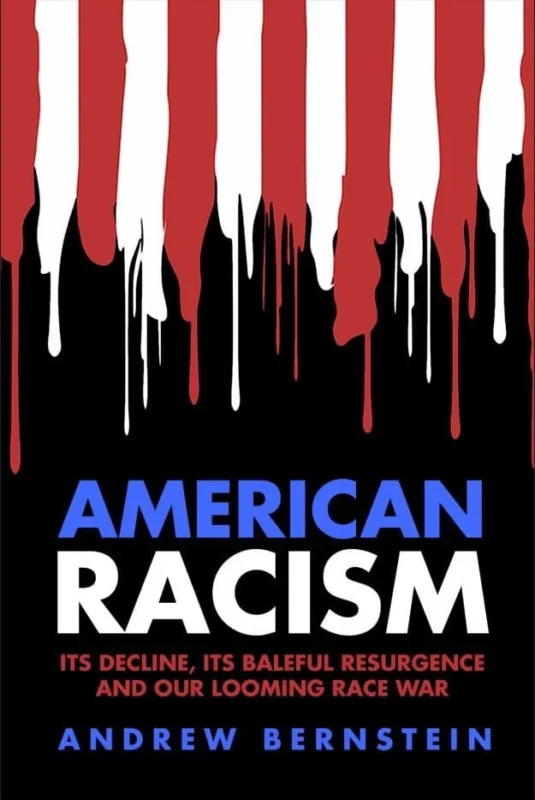Many in the legal profession know there is an “Access to Justice” problem in the U.S. For example, many courts and bar associations across the U.S. have Access to Justice Commissions to try to find solutions to this problem. Even the federal government has an Office for Access to Justice whose mission is to “ensure access to the promises and protections of our civil and criminal legal systems for all communities.”[1]
This article seeks to answer the following questions:
- What is this problem?
- Why does it exist?
- What is the right solution?
What is this problem?
To understand the access to justice problem, we need to define it.
Stephen Younger, a lawyer and contributor to the Yale Law Journal, wrote that “the mainstream view in the legal profession [is] ‘access to justice’ typically refers to providing low cost or free legal services to indigent persons.”[2] The American Bar supports this view by putting on their website “access to pro bono and low-cost legal services for vulnerable persons is essential for an equitable legal system.”[3] In their view, “access to justice” means access to low-cost or no-cost legal services (provided by lawyers), and it’s primarily indigents who are affected by this problem.
An alternative definition comes from the National Center for State Courts (NCSC): “Access to justice is achieved when a person facing a legal issue has timely and affordable access to the level of legal help they need to get a fair outcome on the merits of their legal issue, and can walk away believing they got a fair shake in the process.”[4] In simpler terms, the NCSC identifies “fair outcome on the merits” and “believing they got a fair shake” as the criteria for what access to justice includes. The U.S. Department of Justice also recognizes that “access to justice entails more than legal assistance…”[5]
Which definition is right for the concept of “access to justice”: the narrow view held by some lawyers, the wider view held by the courts, or something else? To answer that question, we’ll need to define “justice.”
Justice
As we go through life, bad things happen. Sometimes, we judge these events as unjust[6] and so we take action to get justice or to give people what they deserve. People may have different views on what is just, but they are all pursuing an outcome they believe is justice.
For example, let’s say a friend asks to borrow money. He provides an explanation for why he needs the loan and promises to repay it in equal installments over six months. For argument’s sake, let’s agree that we would all lend him the money on those terms. He makes one payment, then two months go by. Upon investigation, we discover that the explanation for why he needed the money was a lie. Now he has lied AND failed to satisfy the terms of the agreement. Some people would accept the excuses for lying and for the failure to return the money, in the name of being understanding and compassionate. Others would terminate the friendship but forfeit the money in the name of cutting their losses. But some of us would terminate the friendship and take action to try to get our money back in the name of getting justice. What each of us would do depends on our view of what’s moral. We can call this moral justice.
In pre-civilization times, people who wanted their money back sought justice by gathering friends to confront and potentially beat up the debtor. In modern civilized societies, the state is given the monopoly over the use of force. Thus, individuals seeking justice through force must request state intervention. In order to decide what actions to take, the state evaluates the situation in accordance with established laws. We can call this legal justice. In other words, legal justice is a step that we take to achieve moral justice when force is involved.
While most people focus on legal justice when addressing the access-to-justice issue, it’s essential to remember that legal justice is a means to achieve moral justice. People pursue justice to improve their lives, whether through monetary compensation or the psychological assurance that the world is fair and actions have consequences. Legal justice is, sometimes, a required step in the pursuit of moral justice.
Why does the problem exist?
Challenges in Accessing Legal Justice
Given the serious consequences associated with the use of force, it is reasonable for it to be constrained by due process and legal justifications. However, individuals often struggle due to lack of familiarity with substantive law (such as understanding the right cause of action) and procedural law (such as how to file the forms). This lack of knowledge creates significant barriers for non-lawyers to access the justice system.
Lawyers not only understand these laws but also have access to essential service providers who usually do not work directly with individuals. These include process servers, court runners for jurisdictions that have not fully digitized their systems, third-party investigators and experts, and more.
Hiring an attorney can mitigate these challenges, but also introduces financial barriers. These barriers affect not just indigent individuals, but also the middle class and the wealthy. While middle-class and wealthy individuals might afford a lawyer for a few hours, the extensive time required for ongoing legal support during litigation can quickly exceed even their financial capacity. Further, just because someone can afford a lawyer doesn’t mean the case justifies the expense. In fact, many cases end up costing the litigant more money to pursue via a lawyer than he could gain even if he wins. In such situations, litigants face a difficult choice: either forfeit moral justice by letting wrongdoers go unpunished (i.e., not seeing that actions have consequences) or spending even more money on a lawyer to hold them accountable.
Regulatory Barriers to Pathways to Legal Justice
To access legal justice, pathways must exist. The access-to-legal-justice problem can be viewed as a lack of available pathways for people of all economic backgrounds, including those who can’t afford much, the middle class, and even the wealthy.[7]
Pathways to things or places of value, including justice, do not exist naturally; they must be created. Imagine that your goal is to access the 5th floor of a building. In a free society, you have multiple options, such as stairs, escalators, or elevators. While most building operators pay for the costs of these pathways on behalf of their users, it’s clear that different pathways actually have different use costs due to their differences in construction and operating costs. If the operators were to pass the costs onto their users, then users would be able to choose the pathway that makes the most sense to them given their context and needs. But in a non-free society, there will be those who will use the power of the state to disallow the creation of certain pathways. They may argue that stairs and escalators pose risks, such as falling and tripping, and therefore people need to be protected from themselves by restricting their choices to elevators only.
The primary barriers to the construction of pathways to justice are restrictive regulatory policies. Today’s barriers include regulations prohibiting “non-lawyers practicing law,” regulations against “attorney to non-attorney fee sharing,” regulations against “non-attorney ownership of law firms,” and so on. The common factor among these restrictions is the exclusion of non-lawyers. Recognizing this common theme among the restrictions highlights that the purpose of these regulations is to prevent non-lawyers from entering the legal services field, even at the cost of new pathways to justice.
Not only are non-lawyers disincentivized to create alternative legal services, lawyers are also disincentivized. Developing technology-driven pathways to justice requires substantial upfront investment. Without the ability to partner with non-lawyers for funding, lawyers must provide the capital themselves. Additionally, if they cannot maximize their investments by eventually selling a successful legal services business to a non-lawyer (i.e., going public), they may look for more financially sensible investments such as the stock market or real estate where such restrictions do not exist.
Furthermore, these regulations also limit the work courts can do to provide self-help tools to people. Court self-help staff are restricted in the type of assistance they can offer. Even if courts could design a way to satisfy their requirement to be neutral arbiters (e.g., by providing equivalent services to both sides of a dispute), they may still be prevented from doing so because of “unlicensed practice of law” (UPL) regulations.[8] UPL regulations prevent courts from providing pathways to justice to the very people they are supposed to serve.
Just as it would not be surprising to find elevator manufacturers to be the biggest proponents of regulations to outlaw alternative pathways to higher floors, it is also not surprising to find that lawyers are the biggest proponents of regulations to outlaw non-lawyer pathways to justice. For example, “Numerous legal services organizations, CAOC [Consumer Attorneys of California], California Employment Lawyers Association, California Defense Counsel, and others supported the passage of AB 2958….”[9] AB 2958 effectively ended the California Bar’s attempt to allow non-lawyers to become materially involved in the offering of legal services. It would not, then, be unreasonable to assume that the main motivation for these lawyers is some form of occupation protectionism via the maintenance of a state-enforced monopoly to prevent competition. But even if that were true, it wouldn’t explain why this bill was signed into law. Less than 0.01% of the population are lawyers, so they wouldn’t have enough influence over the population to warrant this bill being signed unless they were tapping into a broader cultural value. Even the lobbying power, financial influence, or political connections of lawyers wouldn’t be sufficient to get these laws passed or maintained without moral support from the acceptance of this cultural value by “we the people.” That broader cultural value is legal paternalism.
Legal Paternalism
“The principle of legal paternalism justifies state coercion to protect individuals from self-inflicted harm, or in its extreme version, to guide them, whether they like it or not, toward their own good.”[10] Legal paternalism, in essence, uses the state to deny individuals’ ability to think for themselves and to act on that thinking, and to make them subservient to the thinking of others.
Legal paternalism justifies many forms of preventive law in the name of “consumer protection.” Service providers can’t be trusted to think and provide services that won’t harm their customers, despite the fact that harming their customers is not in their own interest. And, more importantly, consumers can’t be trusted to make decisions as to what services they should use for a particular situation.
Legal paternalism depends on the following underlying premises:
- “We know better” (Epistemic Superiority): This principle is based on the belief that the experts always possess greater knowledge or understanding about what is good for individuals. This could be due to expertise, access to information, or a more comprehensive understanding of consequences.
- “We have a responsibility to use what we know to ensure that others don’t harm themselves” (Moral Responsibility): This principle reflects the belief that those with greater knowledge have a moral duty to use it to protect individuals from harm, even if it means restricting their autonomy. The idea is that preventing harm is a sufficient justification for imposing certain restrictions on individual freedom.
But are the underlying premises true?
First, while it’s true that experts may have superior knowledge in some cases, this is not universally applicable. There are situations where individuals’ personal context renders their own choice superior to that of the authority, which lacks detailed knowledge of that specific context. In other words, the expert’s choice, which may be based on a generalized understanding, might not account for these nuances and could be considered the inferior choice in that specific context. The objection to epistemic superiority is this simple fact: omniscience is not a human quality.
Second, while it is true that parents have moral responsibilities to their children to ensure they do not harm themselves, this dynamic changes when dealing with adults. Over ten years ago, I came across the principle of “You are responsible for your own happiness.” It was such a powerful principle that I applied it to all aspects of my life. After two months, I came to a realization: If I am responsible for my happiness, then you are responsible for yours. And the corollary to this realization is that I am not responsible for your happiness or, more generally, I am not responsible for the happiness of others. I have neither the moral responsibility nor the moral authority to dictate to others how they should live their lives. While it’s true that if I damage someone else’s property, I am responsible for making recompense for being the cause of the damage. However, their mere existence does not causelessly transfer responsibility or authority over their lives to me.
While there is a growing recognition that regulations arising out of legal paternalism have stifled innovation and created an access-to-justice problem, it’s not clear that legal paternalism has been identified as the root cause.
What is the solution?
Utah established a regulatory sandbox to “unleash the transformative power of innovation and capital into the legal services market.”[11] Arizona skipped the regulatory sandbox model and allows innovative business albeit with restrictions and monitoring.[12] These activities come from a rejection of the premise of epistemic superiority. They come from the realization that there are many who are not lawyers who can come up with alternative pathways to justice if they’re allowed to do so. It also comes from a rejection of the idea that people have a moral duty to protect others from harm, or at the very least, to protect them from unproven harm.
Unfortunately, these initiatives are still inadequate because there hasn’t been an explicit rejection of the underlying cause of preventive regulations: legal paternalism. Without that rejection, sandboxes and alternative business structures remain constrained, and more importantly, unpredictable. When the pendulum of regulations swings between more legal paternalism and less, it reduces the incentives for people to make an investment of time or money to create alternative pathways. Those willing to take the risk must invest significant financial and human resources to navigate through complex and uncertain regulations. For example, my company, JusticeDirect, is trying to innovate in this space but spends significant management and staff time figuring out which service model would work for just a single state out of fifty. There are innovative models to deliver legal services that we won’t even consider due to vague or overly restrictive laws, despite seeing dramatic potential benefits for consumers with little risks for harm.
The correct solution to the problems created by preventive laws is not revising them (as promoted by Institute for the Advancement of the American Legal System[13]) or, worse, introducing more preventive laws, The solution is to adopt the principle of individual rights, reject legal paternalism, and eliminate preventive laws altogether. The only proper laws are retaliatory ones used to rectify actual harm caused by persons violating the rights of others whether by malice, fraud, inadvertence, negligence, etc.
Even the common argument for restricting the practice of law —that limiting the practice of law to licensing attorneys allows the bar to enforce ethical standards and protect consumers—can be addressed without the use of preventive law. There is no fundamental requirement that only a bar association can enforce ethical practice. Ethical standards, if their disregard can be proven to have caused actual harm, can also be maintained by giving citizens the right to sue anyone, whether lawyer or non-lawyer, who fails to adhere to the appropriate code of ethics when practicing law. Therefore, this argument for the need of licensing and a bar is invalid.
In summary, ensuring access to justice necessitates developing alternative pathways, which requires eliminating the regulatory risks and disincentives that hinder their creation. To achieve this, society must move away from legal paternalism and embrace the notion that government intervention should be retaliatory, not preventive. This shift in perspective requires individuals to abandon the beliefs that “we know better” and “we have a moral responsibility to protect others from themselves,” and instead adopt the idea that “each person must be responsible for acquiring the knowledge and taking the actions that are best for their own lives.”
Notes
[1]https://www.justice.gov/opa/speech/director-rachel-rossi-delivers-keynote-address-atlantas-john-marshall-law-school
[2] “The Pitfalls and False Promises of Nonlawyer Ownership of Law Firms,” Stephen P. Younger, https://www.yalelawjournal.org/pdf/F7.YoungerFinalDraftWEB_pkbknk8f.pdf
[3] https://www.americanbar.org/topics/access/
[4] https://www.ncsc.org/consulting-and-research/areas-of-expertise/access-to-justice
[5] https://www.justice.gov/doj/doj-strategic-plan/objective-34-expand-equal-access-justice
[6] While this sentence uses injustice as an example, justice doesn’t apply only to a negative reason. It can also apply to a positive reason. For example, a reward for something good is also an act of justice.
[7] It’s worthwhile to note that those who are concerned with pathways for indigent persons should also be interested in pathways for non-indigent individuals. Innovations often start as luxuries for the wealthy but eventually become accessible to the middle class and the poor (e.g., washing machines, refrigerators, TVs, air travel, cellphones, etc.)
[8] UPL regulations are regulations dictating who can or cannot practice law.
[9] https://www.advocatemagazine.com/article/2022-november/new-california-law-bans-state-bar-s-pursuit-of-corporately-owned-law-firms
[10] Canadian Journal of Philosophy, Joel Feinberg, Legal Paternalism, https://www.jstor.org/stable/4023034
[11] https://utahinnovationoffice.org/
[12] https://www.azcourts.gov/cld/Alternative-Business-Structure
[13] https://iaals.du.edu/blog/reregulation-not-deregulation










